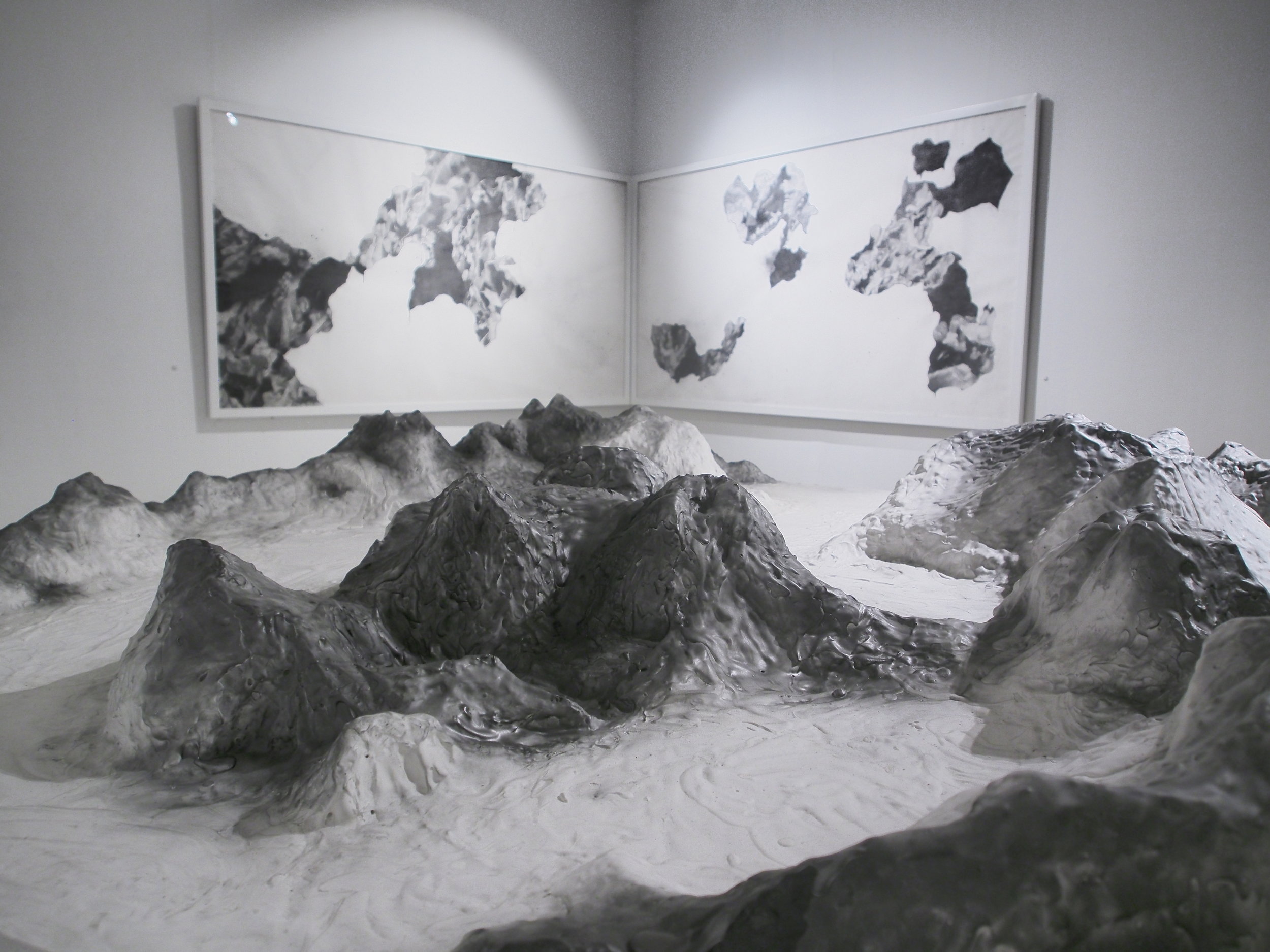WHERE DOES LANDSCAPE BEGIN?
"The oneness of the world, so unachievable in the realm of empirical reality, lives in our minds, in the superimposed layers of tangled and confused memories."
-Ryszard Kapuscinski, "The Lazy River," Granta 73: Necessary Journeys, Spring 2001
"One might put this even more simply. The sky has no surface and is intangible; the sky cannot be turned into a thing or given a quantity. And landscape painting begins with the problem of painting sky and distance."
-John Berger, Ways of Seeing (1972), p. 105
Citing Lucius Burckhardt's What Makes Landscape Beautiful?, Lui Medina adds the term "strollology" to her continuing inquiries of space and place. The hours of wandering that informed this series of drawings, paintings, and photographs suggest something beyond the tradition of landscape imagery. Landscape painting originally responded to the demand for secular images to adorn the walls of more progressive households--at least according to Western Art History, which for decades, largely ignored the Chinese traditions that preceded it by centuries (but that’s for another discussion). In both cases, the rendering of landscapes was committed to the same goal: the composition of an idealized world, one that is shared by the collective yet beheld by the individual. In this sense, one could trace the beginnings of landscape to this utopian impulse.
When discussing her work, Lui Medina is careful about choosing her words - these are not illustrations, but drawings. They do not supplement a text, but they do signify the lived experience of being somewhere beyond the cities where everyday life unfolds. As landscapes, her work contains the narrative wherein place becomes perception and space becomes image, but they also record having observed a world through the body; as drawings, these landscapes are rendered through a practice that is forgiving of uncertainties and capable of celebrating the ongoing, the process-based. In an age of street and satellite views—when even drones are being sold in airport vending machines—there is something impossibly romantic about using your feet to chart territory, and eventually committing that experience to paper not as facts, but as impressions. This is what Burckhard refers to when claiming, strollologically, that “the way” is as important as “the goal”.
And yet, these are not exactly maps, which separate here and there in the process of naming places; but they are also very much like maps in their reminder to keep going, to push forth. Like any landscape, these works can be charged with nostalgia for an environment that is still “preserved”, yet, they effectively commit to memory the wonder and confusion of the world we live in. To be clear, Medina does not paint landscapes, rather she makes paintings about landscape. She also uses landscape as a conceptual frame in which to speak of painting. The crystalline and mineral forms that repeatedly appear in her work, this time on an even grander scale in the form of a relief map done in plaster and graphite, show a consistent concern with how “nature” is constructed. Given the massive sizes of her work (in this case, with drawings measuring up to 9 feet), we are reminded, very subtly, that these images are still scaled down, subject to perception.





